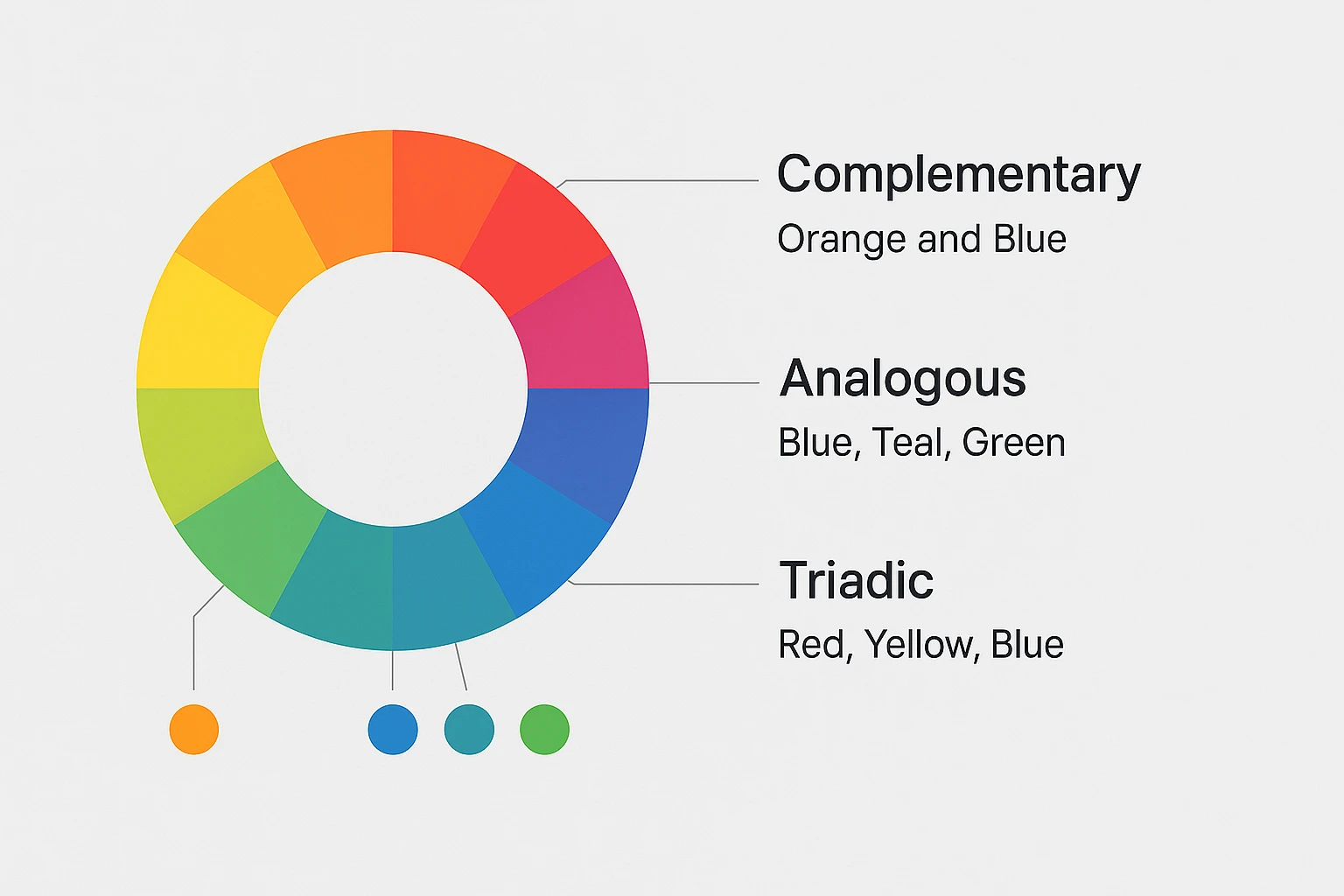What is Color Theory? A CMF Designer's Guide to Using Color with Purpose
I once saw a stunning product design completely sabotaged by its color scheme. The form was elegant, the function was brilliant, but the CMF designer had chosen a palette they personally liked instead of one that was strategically right for the brand.
The result? The product felt cheap and confusing to its target audience. It was a costly failure of communication, a potent reminder of a hard-earned lesson: Color is never just decoration. It is a language.
Color Theory is the foundational grammar of that language. It's the framework that allows designers to move beyond personal preference and use color with conscious, strategic intent—to build emotion, communicate value, and drive decisions. In the high-stakes world of CMF (Color, Material, Finish) Design, mastering this grammar is not optional; it is the core of the craft.
This isn't an art school lecture. This is a CMF strategist's guide to using color with purpose, from its scientific building blocks to its emotional and cultural impact.
The Absolute Basics: The 3 Dimensions of Color
To master a language, you must first learn its alphabet and grammar. In color, that means understanding the color wheel and the three dimensions that define every color in existence.
Hue (The Color's Name)
This is the simplest dimension: Red, Yellow, Blue, Green. It's the pure color itself, its foundational identity.
Saturation (The Color's Intensity)
Think of this as a volume knob. Low saturation is a soft, muted, grayish color. High saturation is a punchy, vibrant, pure pigment.
Value (The Color's Brightness)
This is the lightness or darkness. Adding white to a hue creates a lighter tint. Adding black creates a darker shade. Adding grey creates a more muted tone.
The Rules of Harmony: How to Make Colors Work Together
Color harmony is about creating a sense of visual order. It’s the art of choosing colors that are naturally pleasing to the human eye, avoiding palettes that feel either chaotic (too stimulating) or boring (not stimulating enough). Here are the foundational harmonies every designer should know.
 color wheel
color wheel
 Analogous (For Calm & Serenity): Using colors that sit right next to each other on the color wheel (like blue, teal, and green). This low-contrast scheme is inherently harmonious and relaxing, perfect for a wellness brand or a calming interior space.
Analogous (For Calm & Serenity): Using colors that sit right next to each other on the color wheel (like blue, teal, and green). This low-contrast scheme is inherently harmonious and relaxing, perfect for a wellness brand or a calming interior space. Complementary (For Energy & Contrast): Using colors that are directly opposite each other on the wheel (like orange and blue). This high-impact combination creates a dynamic tension that grabs attention, making it perfect for call-to-action buttons or energetic branding.
Complementary (For Energy & Contrast): Using colors that are directly opposite each other on the wheel (like orange and blue). This high-impact combination creates a dynamic tension that grabs attention, making it perfect for call-to-action buttons or energetic branding. Triadic (For Vibrancy & Balance): Using three colors that are evenly spaced on the wheel (like red, yellow, and blue). This offers high contrast and vibrancy but feels more balanced and stable than a complementary scheme. It's often used for children's products or brands that want to feel dynamic but approachable.
Triadic (For Vibrancy & Balance): Using three colors that are evenly spaced on the wheel (like red, yellow, and blue). This offers high contrast and vibrancy but feels more balanced and stable than a complementary scheme. It's often used for children's products or brands that want to feel dynamic but approachable.
Color Psychology in CMF: Communicating Without Words
Beyond the science, color is a tool of pure psychology. A strategic CMF designer doesn't just ask "What color is this?"; they ask "What does this color communicate?"
The Emotional Language of Color
Color triggers powerful, often subconscious, emotional and physiological responses. The right color choice can build trust, create excitement, or even make you hungry.
 Blue famously communicates trust, calm, and competence, which is why it's the dominant color in finance and tech.
Blue famously communicates trust, calm, and competence, which is why it's the dominant color in finance and tech. Red signals passion, energy, and urgency, making it a favorite for restaurant brands and clearance sales.
Red signals passion, energy, and urgency, making it a favorite for restaurant brands and clearance sales. Green is inextricably linked with nature, health, and well-being, making it essential for sustainable and wellness brands.
Green is inextricably linked with nature, health, and well-being, making it essential for sustainable and wellness brands. Black conveys power, sophistication, and luxury, the go-to choice for high-end fashion and technology.
Black conveys power, sophistication, and luxury, the go-to choice for high-end fashion and technology.
CMF in Context: Trends and Time
A color's meaning is not static; it is shaped by culture and time. A "Harvest Gold" refrigerator was the height of luxury in the 1970s but feels hopelessly dated now. Understanding these shifts is a core part of a CMF designer's job, a theme we explore in our article CMF Trends 2025.
The Modern Color Lab: Bringing Theory to Life with Confidence
So, how does a modern CMF designer navigate this incredible complexity? How do you actually test and validate your color choices on a real 3D product? A flat color swatch in Illustrator can be incredibly misleading.
This is where digital tools are not just a convenience, but a necessity. The modern workflow requires a virtual CMF lab where you can see your color strategies interact with real light, material, and form. This is where a dedicated, modern tool like the Realishot CMF Design Studio shines.
 See Color on Form, in Realistic Light: A color's appearance can change dramatically on a curved, glossy surface versus a flat, matte one. Realishot’s physically-based rendering lets you see this truthfully, eliminating expensive guesswork.
See Color on Form, in Realistic Light: A color's appearance can change dramatically on a curved, glossy surface versus a flat, matte one. Realishot’s physically-based rendering lets you see this truthfully, eliminating expensive guesswork. Iterate at the Speed of Thought: The AI Concept Studio is the ultimate tool for color exploration. Why manually create five colorways when AI can generate a hundred strategically sound variations in minutes? This lets you explore a far wider creative territory and discover unexpected harmonies. This is a core discipline of What is CMF Design?.
Iterate at the Speed of Thought: The AI Concept Studio is the ultimate tool for color exploration. Why manually create five colorways when AI can generate a hundred strategically sound variations in minutes? This lets you explore a far wider creative territory and discover unexpected harmonies. This is a core discipline of What is CMF Design?. Ensure Flawless Brand Accuracy: You can input exact Pantone, HEX, or RAL values, ensuring that your final digital prototype is a perfect match for your brand's official guidelines. This combination of speed and precision is why it's a top pick in our guide to the easiest 3D rendering software.
Ensure Flawless Brand Accuracy: You can input exact Pantone, HEX, or RAL values, ensuring that your final digital prototype is a perfect match for your brand's official guidelines. This combination of speed and precision is why it's a top pick in our guide to the easiest 3D rendering software.
 headphone cmf design
headphone cmf design
Experiment with Color for Free
Conclusion: Beyond the Rules, There Is Purpose
Color theory is far more than a set of rigid rules from a textbook. It is the grammar. It provides the structure and the principles you need to speak the language of color fluently, persuasively, and with strategic intent.
A masterful color strategy can transform a simple product into a cultural icon. In the past, achieving this level of mastery required decades of trial-and-error with costly prototypes. Today, modern digital tools like Realishot have democratized the process, providing an accessible, risk-free sandbox to experiment, learn, and perfect this crucial art form. The power to design with color, with purpose, is now at your fingertips.
